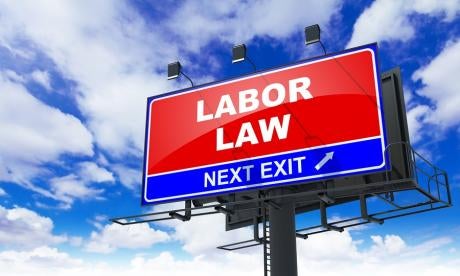Alex Acosta was confirmed by the Senate to be the next Secretary of Labor. He now takes responsibility for several high-profile issues with critical implications for government contractors.
As we have previously written, the Labor Department was an exceptionally active regulator from 2013 through the end of the Obama Administration. Although few of us expect that pace to continue, Secretary Acosta will have to balance two competing pressures. On one hand, the President has already signed a law repealing one of the Labor Department’s most controversial regulations (the Fair Pay and Safe Workplaces rule) and directed agencies to review current regulations with a critical eye. On the other hand, Acosta will be leading a department charged with enforcing the laws that protect or favor workers’ rights, which sometimes compete with the priorities of their employers.
These potentially opposing viewpoints were on display during Acosta’s confirmation hearing where he was pressed repeatedly by Senators to discuss his views on various regulations. Asked by Senator Roberts to give his “overall philosophy on regulation,” Acosta emphasized the need to eliminate regulations “that are not serving a useful purpose,” and the need to enable small businesses to thrive.
Some uncertainty remains with respect to two specific cases that government contractors are watching closely. First, the regulations governing paid sick leave were not raised during Acosta’s confirmation hearing, and Acosta has not publicly opined on them. They were issued late in President Obama’s second term, and therefore fell within the window of the Congressional Review Act (“CRA”), but the level of chatter about repealing those regulations has lately been quite low.
Second, the Department is currently litigating proposed changes to overtime pay rules. A district court held last year that the Department acted without authorization by doubling the salary threshold for defining executive, administrative, professional, outside sales, and computer employees (so-called “white collar” employees) from approximately $24,000 to $47,000. Acosta demurred when Senators asked for his opinion on the merits of the case. He acknowledged, however, that the large increase was partially a result of the long delay in adjusting the salary threshold, which had not been changed since 2004. Adjusting for cost of living rises, Acosta suggested, would result in a revised threshold closer to $33,000. He declined to say whether the Labor Department might change its position in the litigation in the Fifth Circuit, where briefing is scheduled to be complete in at the end of June, or withdraw the rule and propose an alternative.
On a positive note, Acosta expressed support for the practice of publishing detailed “opinion letters” from the Administrator of the Wage and Hour Division. This practice has been halted since 2009. This type of guidance, although not binding on a court, could provide helpful clarity to employers with contracts covered by the Service Contract Act and the Davis-Bacon Act.






 i
i


